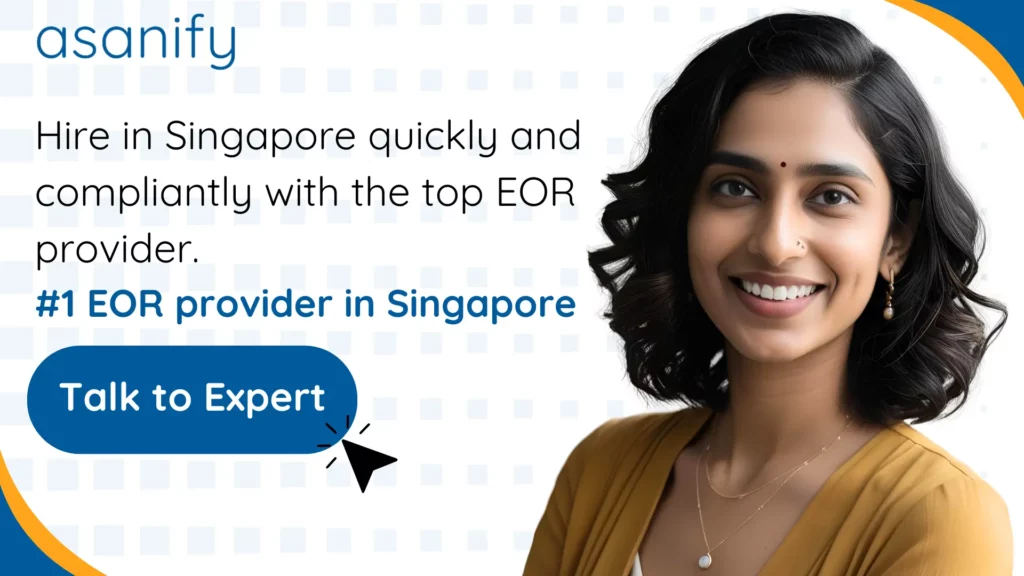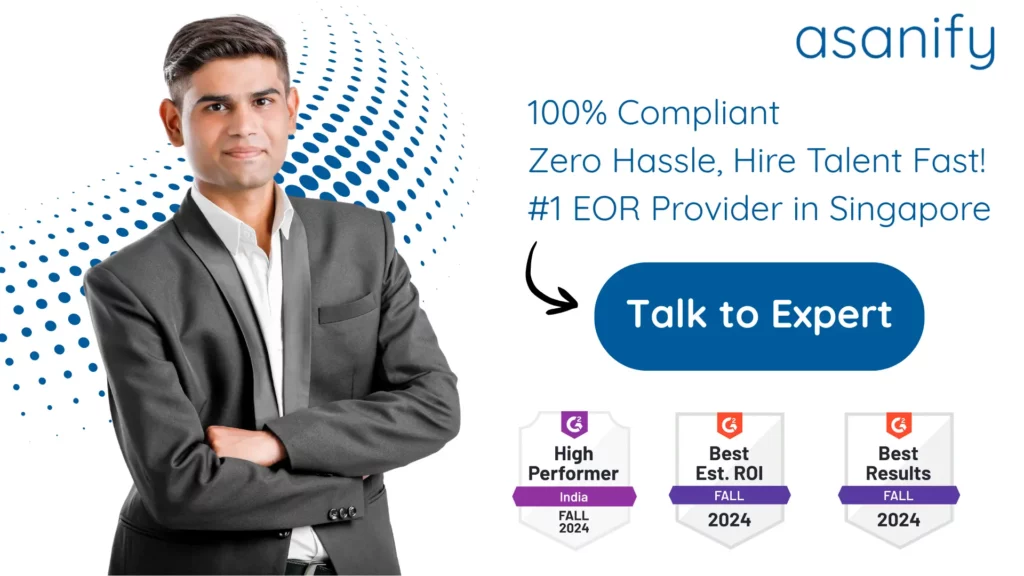Whether you’re a foreign employer or a local professional working in Singapore, understanding how to approach employee tax optimization is crucial for maximizing your take-home pay. Singapore’s territorial and progressive tax system offers several legal avenues to reduce personal income tax, particularly when supported by structured compensation and Central Provident Fund (CPF) contributions. This guide explores strategic tax-saving approaches tailored to employees in Singapore.
Table of Contents
- Overview of Tax Optimization for Employees
- Tax Optimization Impact on Take-Home Salary
- Sample Salary Structuring
- Common Tax Reliefs and Deductions in Singapore
- Leveraging CPF Contributions
- Fringe Benefits and Non-Taxable Perks
- Reliefs for Families and Dependents
- Relief for Continuing Education
- Rental Deduction (for Property Owners)
- Charitable Contributions
- Common Exemptions
- Conclusion
- FAQs
Overview of Tax Optimization for Employees
Singapore imposes a progressive personal income tax rate from 0% to 24% (as of YA2025). Income earned outside Singapore is generally not taxable if not received in Singapore. By taking advantage of reliefs, CPF contributions, and non-taxable benefits, employees can significantly lower their effective tax rate.
Tax Optimization Impact on Take-Home Salary
Using available tax reliefs—like earned income relief, spouse or child relief, and CPF relief—employees can reduce their chargeable income. Pairing this with flexible benefits (like employer-sponsored insurance or training subsidies) can further optimize overall compensation.
Sample Salary Structuring
Consider a Singaporean citizen earning a gross monthly salary of SGD 6,000, which equates to SGD 72,000 annually. Here’s how tax optimization and CPF contributions apply in this scenario:
- CPF Contributions:
- Employee CPF (20%): SGD 1,200/month or SGD 14,400/year is automatically deducted and contributed to the employee’s CPF account. This amount is tax-deductible, lowering the employee’s taxable income.
- Employer CPF (17%): An additional SGD 1,020/month or SGD 12,240/year is contributed by the employer. This is not taxable for the employee and serves as a non-monetary benefit.
- Employee CPF (20%): SGD 1,200/month or SGD 14,400/year is automatically deducted and contributed to the employee’s CPF account. This amount is tax-deductible, lowering the employee’s taxable income.
- Net Taxable Income:
After deducting mandatory CPF contributions and applicable personal reliefs such as Earned Income Relief, CPF Relief, and possibly Parent Relief or Course Fee Relief, the employee’s taxable income is typically reduced to around SGD 50,000–55,000. - Estimated Tax Payable:
Based on IRAS’ progressive tax structure, the employee would pay approximately SGD 1,150 to SGD 1,500 annually in income tax. This assumes no exceptional reliefs or donations are applied beyond standard claims.
This structure not only ensures statutory compliance but also leverages CPF and personal reliefs to keep income tax obligations low while maximizing take-home pay and long-term savings.

Common Tax Reliefs and Deductions in Singapore
Singapore offers a wide array of individual tax reliefs:
- CPF contributions (up to statutory limits)
- Earned income relief (up to SGD 8,000)
- NSman relief (up to SGD 5,000)
- Spouse, child, and parent reliefs
- Course fee relief (up to SGD 5,500/year)
- Life insurance relief
- Foreign domestic worker levy relief (for working mothers)
Suggested Read: EOR Singapore: A Detailed Guide 2025
Leveraging CPF Contributions
CPF is mandatory for Singapore citizens and PRs. Key tax benefits include:
- Employee CPF contributions are deductible.
- Employer CPF contributions are not taxed for the employee.
- Contributions support retirement, housing, and medical needs.
Voluntary top-ups under the Retirement Sum Topping-Up Scheme also provide additional tax relief.
Fringe Benefits and Non-Taxable Perks
Several employer-provided benefits are non-taxable:
- Health insurance premiums (if not cash reimbursed)
- Transport allowances below prescribed thresholds
- Training reimbursements
- Group term life or personal accident insurance
- Retirement and pension contributions within IRAS guidelines

Reliefs for Families and Dependents
Working parents may benefit from:
- Qualifying Child Relief / Handicapped Child Relief
- Parenthood Tax Rebate
- Working Mother’s Child Relief (WMCR)
- Grandparent Caregiver Relief
These can significantly reduce tax liability, especially for dual-income families.
Relief for Continuing Education
Course Fee Relief is available for courses relevant to your profession:
- Up to SGD 5,500/year
- Must be from approved institutions
- Receipts and course outlines must be retained for audit
Rental Deduction (for Property Owners)
Employees who rent out property in Singapore can either deduct actual rental-related expenses—such as mortgage interest, agent commissions, and maintenance costs—or opt for a simplified method by claiming deemed expenses at 15% of gross rental income plus mortgage interest. However, it’s important to note that employees who are tenants (i.e., renting a home to live in) are not eligible to claim any rental expense deductions under Singapore tax regulations.
Charitable Contributions
Donations made to approved Institutions of a Public Character (IPCs) in Singapore qualify for a tax deduction of 250% of the donated amount, provided the donations are made through recognized payment modes such as credit card, bank transfer, or cheque.
Suggested Read: Pay Contractors in Singapore: A Complete Guide to the Hiring Process
Common Exemptions
This makes Singapore a favorable jurisdiction for long-term savings and global income planning. Individuals can optimize their take-home pay by leveraging these tax exemptions alongside structured salary components.

Conclusion
Singapore’s tax regime is straightforward but full of opportunities for employees to optimize their take-home income. Leveraging CPF schemes, dependent reliefs, fringe benefits, and proper structuring of salary packages can lead to significant savings. For both employers and employees, staying informed and compliant is key to maximizing financial well-being.
Would you like this adapted into a downloadable PDF or paired with onboarding content for EOR employees in Singapore?
FAQs
Singapore’s income tax is progressive, ranging from 0% to 24%, depending on annual chargeable income.
Yes, mandatory employee CPF contributions are deductible from taxable income, reducing your overall tax liability.
No, employer CPF contributions are not taxable for the employee.
Common reliefs include Earned Income Relief, CPF Relief, Spouse/Child Relief, Course Fee Relief, and Parent Relief.
Yes, Course Fee Relief (up to SGD 5,500) is available if the course is relevant to your current job.
Working mothers may claim Working Mother’s Child Relief (WMCR), Parenthood Tax Rebate, and Foreign Domestic Worker Levy Relief.
Yes, employer-paid medical insurance is non-taxable, unless reimbursed in cash.
Yes, but rental expenses can be deducted either on an actual basis or as a deemed 15% of gross rent plus mortgage interest.
CPF is generally not applicable to foreign employees. However, PRs can claim CPF relief after registration.
Overseas income is not taxable unless remitted into Singapore under certain business arrangements.
Donations to approved IPCs (Institutions of a Public Character) are eligible for a 250% tax deduction.
Not to be considered as tax, legal, financial or HR advice. Regulations change over time so please consult a lawyer, accountant or Labour Law expert for specific guidance.

